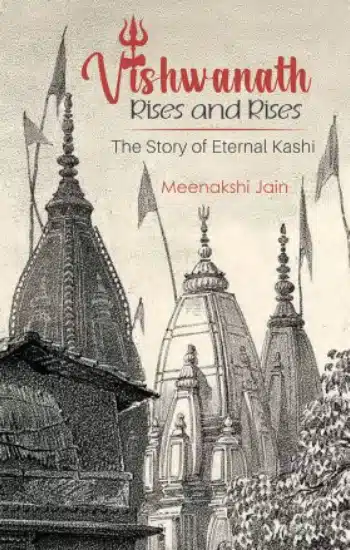
Save: 25%

Save: 30%
Vishwanath Rises and Rises: The story of Eternal Kashi
Publisher:
| Author:
| Language:
| Format:
₹995 ₹846
Save: 15%
In stock
Ships within:
In stock
ISBN:
Page Extent:
Kashi, the City of Light, was the embodiment of Indian civilization for millennia. Archaeological mounds at Rajghat Plateau, on the northern outskirts of the city, represented the ancient settlement of Kashi. Its three major settlements, Varanasi, Sarnath, and Aktha, all had “a religious nature.” The first reference to Kashi was in the Paippalada recension of the Atharva Veda (V.22.14). The grammarian Panini mentioned Varanasi as the capital of Kashi janapada, and its citizens as varanaseya.
Varanasi was first attacked in 1013 CE, by the Ghaznavid forces, under Ahmed Nialtagin. The cumulative effect of the subsequent centuries of assault was the complete obliteration of Banaras of the Puranic mahatmyas. The Krittivasa, Omkara, Mahadeva, Madhyameshvara, Visveshvara, Bindu Madhava, Kaal Bhairava, and countless other temples were all razed. In many cases, mosques were built with “calculated insolence” in their place, and the sites were forever closed to Hindus. But despite the difficult centuries, the construction of temples in Kashi did not cease, no matter how modest the structure might be.
The great Vishvanath temple was destroyed no less than three times during those centuries. It was said that in 1194 CE, when first attacked by Aibak, and on each subsequent occasion, Brahmins hid the jyotirlinga in the Jnanavapi, the well of knowledge. Queen Razia, during her short turbulent reign, appropriated the site of the temple and had a mosque constructed there. The temple was subsequently rebuilt at another location, where too it was ravaged.
Despite the repeated onslaughts, Banaras retained its standing as a centre of Hindu religious and intellectual activity.
Kashi, the City of Light, was the embodiment of Indian civilization for millennia. Archaeological mounds at Rajghat Plateau, on the northern outskirts of the city, represented the ancient settlement of Kashi. Its three major settlements, Varanasi, Sarnath, and Aktha, all had “a religious nature.” The first reference to Kashi was in the Paippalada recension of the Atharva Veda (V.22.14). The grammarian Panini mentioned Varanasi as the capital of Kashi janapada, and its citizens as varanaseya.
Varanasi was first attacked in 1013 CE, by the Ghaznavid forces, under Ahmed Nialtagin. The cumulative effect of the subsequent centuries of assault was the complete obliteration of Banaras of the Puranic mahatmyas. The Krittivasa, Omkara, Mahadeva, Madhyameshvara, Visveshvara, Bindu Madhava, Kaal Bhairava, and countless other temples were all razed. In many cases, mosques were built with “calculated insolence” in their place, and the sites were forever closed to Hindus. But despite the difficult centuries, the construction of temples in Kashi did not cease, no matter how modest the structure might be.
The great Vishvanath temple was destroyed no less than three times during those centuries. It was said that in 1194 CE, when first attacked by Aibak, and on each subsequent occasion, Brahmins hid the jyotirlinga in the Jnanavapi, the well of knowledge. Queen Razia, during her short turbulent reign, appropriated the site of the temple and had a mosque constructed there. The temple was subsequently rebuilt at another location, where too it was ravaged.
Despite the repeated onslaughts, Banaras retained its standing as a centre of Hindu religious and intellectual activity.
About Author
The Hindus of Hindustan (2023); Vasudeva Krishna and Mathura (2021); Flight of Deities and Rebirth of Temples (2019); The Battle for Rama - Case of the temple at Ayodhya (2017); Sati - Evangelicals, Baptist Missionaries and the changing Colonial Discourse (2016); and Rama and Ayodhya (2013).
Reviews
Clear filtersThere are no reviews yet.



Reviews
Clear filtersThere are no reviews yet.